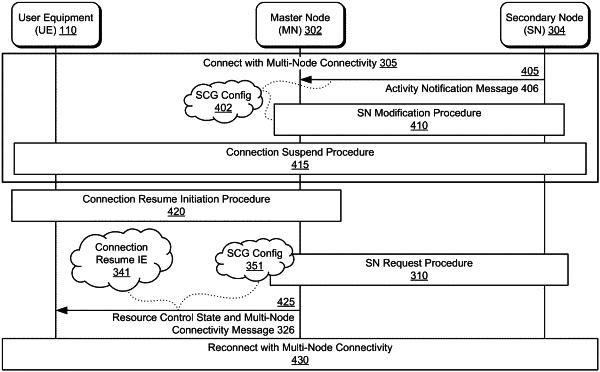| CPC H04W 76/16 (2018.02) [H04W 76/19 (2018.02); H04W 76/27 (2018.02); H04W 76/30 (2018.02)] | 20 Claims |

|
1. A base station comprising:
a radio-frequency transceiver;
a processor and memory system configured to direct the base station to:
operate as a master node for multi-node connectivity with a user equipment and a secondary node;
prior to sending a first resource control state and multi-node connectivity message, suspend a connection associated with the multi-node connectivity and directing the user equipment to transition from a connected state to an inactive state; and
send the first resource control state and multi-node connectivity message to the user equipment, the first resource control state and multi-node connectivity message including:
state change information to direct the user equipment to transition from the inactive state to the connected state and the state change information includes a connection resume information element to direct the user equipment to transition from the inactive state to the connected state; and
multi-node connectivity information including a full secondary cell group configuration to direct the user equipment to modify a previously-stored secondary cell group configuration based on the secondary cell group configuration.
|